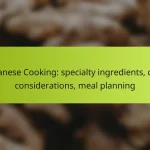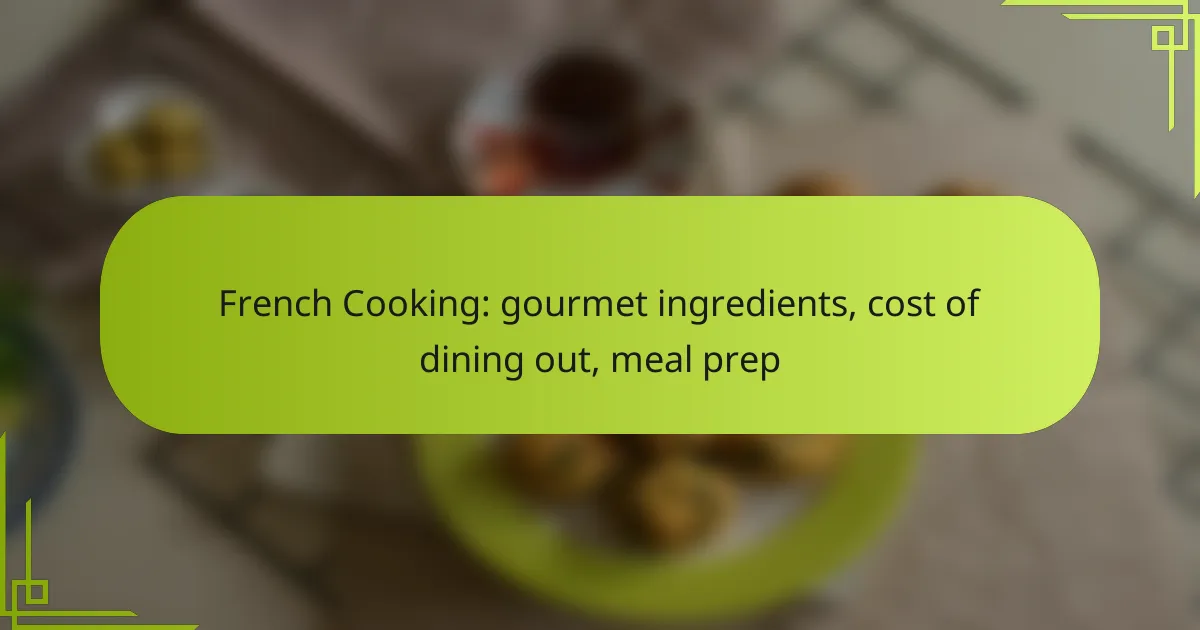Exploring Thai cuisine can be both budget-friendly and flavorful, with dishes like Pad Thai and Fried Rice offering delicious options that are easy to prepare. Sourcing authentic ingredients is essential for capturing the essence of these meals, and local Asian grocery stores or online retailers can provide the necessary components. A well-planned Thai meal incorporates a variety of proteins, vegetables, and carbohydrates, ensuring a nutritious and satisfying dining experience.

What are the best Thai dishes for budget-friendly meal planning?
Budget-friendly Thai dishes focus on affordable ingredients while delivering rich flavors. Options like Pad Thai and Fried Rice are not only economical but also versatile, making them ideal for meal planning.
Pad Thai
Pad Thai is a popular stir-fried noodle dish that combines rice noodles, eggs, tofu or shrimp, and a tangy sauce made from tamarind paste. To keep costs down, consider using tofu as a protein source, which is often cheaper than meat.
When meal planning, prepare a large batch and store portions in the fridge. This dish reheats well and can be customized with various vegetables, making it a flexible option for different tastes.
Green Curry
Green Curry features a fragrant blend of green curry paste, coconut milk, and vegetables, often served with rice. For a budget-friendly version, use seasonal vegetables and limit the amount of meat or opt for chicken, which tends to be less expensive.
Cook in larger quantities to save time and money, as it freezes well for future meals. Pair it with jasmine rice for a complete meal that’s both satisfying and economical.
Tom Yum Soup
Tom Yum Soup is a spicy and sour broth typically made with shrimp, mushrooms, and fresh herbs. To reduce costs, use a smaller amount of shrimp and bulk up the soup with mushrooms and vegetables.
This dish is quick to prepare and can be made in large batches. It’s perfect for meal prep, as it can be stored in the fridge for a few days or frozen for later use.
Massaman Curry
Massaman Curry is a rich, mildly spicy dish that combines coconut milk, potatoes, peanuts, and meat, usually beef or chicken. For budget-conscious cooking, consider using less expensive cuts of meat or even substituting with chickpeas for a vegetarian option.
This curry is great for meal planning as it tastes even better the next day. Make a big pot and serve it with rice for several meals throughout the week.
Fried Rice
Fried Rice is a versatile dish that can incorporate leftover rice, vegetables, and proteins like eggs or chicken. It’s an excellent way to use up ingredients you already have, making it very cost-effective.
To enhance flavor without increasing costs, use soy sauce and a few spices. This dish is quick to prepare and can be customized to suit different preferences, making it a staple for budget meal planning.

How to source authentic Thai ingredients in the UK?
Sourcing authentic Thai ingredients in the UK involves exploring various local and online options to find the best quality products. Consider visiting Asian grocery stores, reputable online retailers, and specialty markets, particularly in larger cities like London, to ensure you have the right ingredients for your dishes.
Local Asian grocery stores
Local Asian grocery stores are often the best place to find authentic Thai ingredients. These stores typically carry a wide range of products, including fresh herbs, spices, sauces, and noodles essential for Thai cooking.
When visiting, look for items like Thai basil, lemongrass, and fish sauce, which are staples in many Thai recipes. Prices can vary, but you can generally find good deals, especially if you buy in bulk.
Online retailers like Amazon
Online retailers like Amazon offer a convenient way to source Thai ingredients without leaving home. You can find a variety of products, including specialty items that may not be available in local stores.
When shopping online, check customer reviews and ratings to ensure quality. Be mindful of shipping costs, as they can add to your overall budget, especially for heavier items.
Specialty markets in London
London is home to several specialty markets that focus on Asian cuisine, making it an excellent place to find authentic Thai ingredients. Markets such as Borough Market and Camden Market often feature stalls dedicated to Thai food.
These markets not only provide fresh produce and unique ingredients but also allow you to engage with vendors who can offer cooking tips and recommendations. Prices may be slightly higher than in grocery stores, but the quality and authenticity often justify the cost.

What are the key components of a Thai meal plan?
A Thai meal plan typically includes a balance of proteins, vegetables, and carbohydrates, ensuring a variety of flavors and nutrients. Key components often involve fresh ingredients that reflect the vibrant culinary traditions of Thailand.
Protein sources
Common protein sources in Thai cuisine include chicken, pork, beef, and seafood, such as shrimp and fish. Tofu is also a popular vegetarian option, providing a versatile base for many dishes.
When sourcing proteins, consider local markets for fresh options, which can enhance flavor and quality. Aim for a mix of animal and plant-based proteins to create balanced meals.
Vegetable selection
Vegetables play a crucial role in Thai meals, adding color, texture, and nutrition. Staples include bell peppers, broccoli, carrots, and leafy greens like Thai basil and cilantro.
Choose seasonal vegetables for the best flavor and price. Incorporating a variety of colors not only makes dishes visually appealing but also maximizes nutrient intake.
Rice and noodle options
Rice is a staple in Thai cuisine, with jasmine rice being the most popular choice. Noodles, such as rice noodles and egg noodles, are also widely used in various dishes like Pad Thai and soups.
When planning meals, consider the type of carbohydrate that complements your protein and vegetable choices. For a budget-friendly option, buying rice in bulk can save money over time.

How can I make Thai dishes healthier?
To make Thai dishes healthier, focus on ingredient substitutions, reducing sugar and salt, and incorporating more vegetables. These adjustments can enhance nutritional value while maintaining the authentic flavors of Thai cuisine.
Substituting ingredients
Substituting ingredients in Thai dishes can significantly improve their health benefits. For example, replace coconut milk with low-fat yogurt or almond milk to reduce saturated fat content. Additionally, using whole grain rice instead of white rice increases fiber intake.
Consider swapping traditional proteins like fatty cuts of meat with lean options such as chicken breast or tofu. These alternatives provide essential nutrients while lowering calorie counts. Always aim for fresh, seasonal vegetables to boost vitamins and minerals in your meals.
Reducing sugar and salt
Reducing sugar and salt in Thai dishes can enhance health without sacrificing flavor. Start by cutting back on added sugars in sauces like sweet chili or tamarind sauce. Instead, use natural sweeteners like honey or agave syrup in smaller amounts.
For salt, opt for low-sodium soy sauce or fish sauce, which can help maintain the savory profile of your dishes while lowering sodium intake. Experiment with herbs and spices, such as lemongrass or basil, to add depth without relying on salt. Aim to keep sodium levels below recommended daily limits for better heart health.

What are the essential tools for cooking Thai food?
Essential tools for cooking Thai food include a variety of utensils that enhance the preparation and cooking processes. Key items like a wok, mortar and pestle, and sharp knives are crucial for achieving authentic flavors and textures.
Wok
A wok is a versatile cooking vessel that is essential for preparing Thai dishes. Its round bottom allows for even heat distribution, making it ideal for stir-frying, deep-frying, and steaming. When selecting a wok, consider materials such as carbon steel or cast iron for better heat retention.
To use a wok effectively, preheat it before adding oil to create a non-stick surface. This technique helps achieve that signature charred flavor found in many Thai meals. A well-seasoned wok can last for years and improve with use, enhancing the taste of your dishes.
When cooking with a wok, keep your ingredients chopped and ready to go, as the cooking process is quick. Avoid overcrowding the wok to ensure even cooking and maintain the desired texture in your food. Regular maintenance, such as cleaning and re-seasoning, will keep your wok in top condition for authentic Thai cooking.










